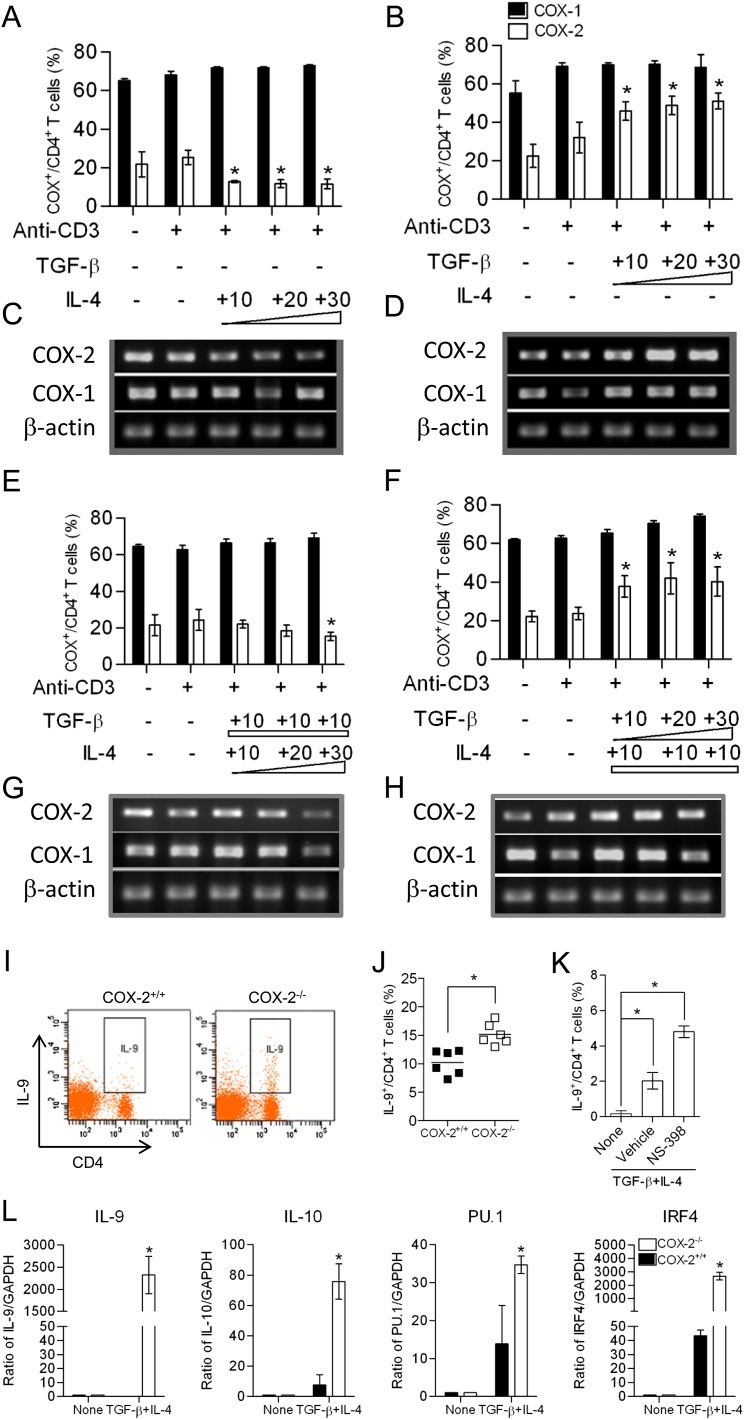Figure 2.
Increased T helper cell type 9 (Th9) differentiation in cyclooxygenase (COX)-2−/− naive T cells in vitro. (A, B, E, and F) Naive CD4+ T cells were isolated from wild-type (WT) mice and differentiated in vitro with anti-CD3, anti-CD28, IL-4 (10–30 ng/ml), and transforming growth factor (TGF)-β1 (10–30 ng/ml) for 3–5 days. CD4+ COX-1+ and CD4+ COX-2+ T cells were analyzed by flow cytometry. (C, D, G, and H) COX-1 and COX-2 mRNA levels were detected by RT-PCR in the experiments in (C and D) and (G and H). Results are representative of three independent experiments. (I and J) Naive CD4+ T cells were sorted from WT and COX-2−/− mice, differentiated in the presence of anti-CD3, CD28, TGF-β, and IL-4 for 3–5 days in vitro, and the percentages of IL-9+/CD4+ T cells were analyzed by flow cytometry. Th9 cell differentiation was significantly increased in COX-2−/− cells relative to WT (n = 6 each). (K) Incubation of WT naive CD4+ T cells with NS-398 also increased Th9 cell differentiation in vitro. (L) mRNA levels of IL-9, IL-10, PU.1, and IFN-regulatory factor (IRF) 4 were detected by real-time RT-PCR in naive CD4+ T cells and in vitro–differentiated Th9 cells (n = 6). *P < 0.05 versus WT.

